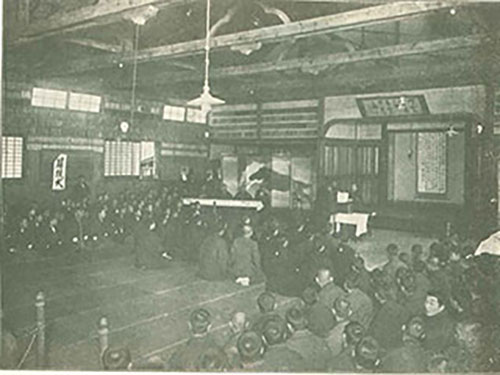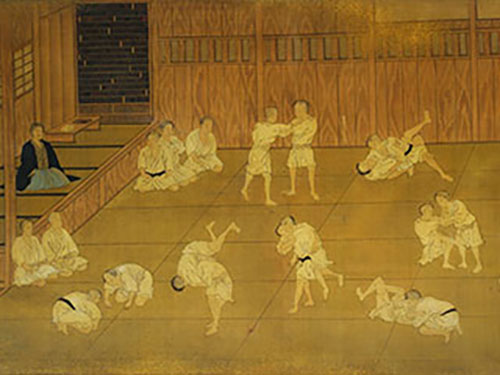The story of Kodokan Judo begins with a young man named Jigoro Kano, who, in the late 19th century, sought to overcome his physical weakness and deepen his understanding of self-discipline. His journey would ultimately lead to the creation of one of the most influential martial arts in the world.
From Weakness to Strength
Jigoro Kano was born in 1860 into a well-educated family in Japan. Though academically gifted, he was physically small and often bullied in his youth. Seeking to strengthen himself, he began studying jujutsu, the classical Japanese art of self-defence that was used by samurai. Kano trained under masters of several jujutsu styles, including Tenjin Shin’yō-ryū and Kito-ryū, absorbing their techniques and philosophies.
He soon realised that while jujutsu was rich in technique, it often lacked a consistent educational framework. Many styles focused primarily on combat effectiveness, with little attention to personal development, safety, or broader values. Kano saw the potential to transform this ancient knowledge into something more refined—something that could be taught systematically, practised safely, and used to educate not just the body, but also the mind and character.
The Founding of the Kodokan
In 1882, at the age of just 22, Jigoro Kano founded his own dojo in Tokyo: the Kodokan, which means “the place to study the way”. He started with only twelve tatami mats in a small room at the Eishō-ji temple in the Shitaya district. There, he began teaching a new martial art he named judo, meaning “the gentle way”.
Unlike many traditional martial arts that were rooted in feudal combat, Kano’s judo emphasised physical education, ethical development, and mutual respect. He eliminated dangerous techniques, refined others, and created a safer environment for practice. In doing so, he laid the foundation for a discipline that could be introduced in schools, universities, and broader society.
A New Educational Philosophy
At the core of judo are two philosophical principles that Kano defined clearly:
Seiryoku-Zen’yō – “Maximum efficient use of energy.” This principle encourages intelligent use of force, balance, and timing to overcome strength with skill.
Jita-Kyōei – “Mutual welfare and benefit.” This reflects the belief that judo should help individuals grow while contributing to the well-being of others.
These principles were not limited to the tatami. Kano intended them to shape the way people lived their lives. He believed judo was a path (a dō)—a way to cultivate body, mind, and society.
The Rise of Kodokan Judo
As Kano’s students grew in number and ability, they began challenging—and defeating—rival jujutsu schools in public matches. This helped establish judo’s reputation across Japan. The Kodokan became the central authority for technical development, ranking, and instructor training.
Kano’s status also rose beyond the dojo. He became Japan’s first member of the International Olympic Committee, served as a leading educational reformer, and introduced judo into Japan’s public school system. His vision of physical education as a vehicle for national and personal development aligned with the broader changes happening in Meiji-era Japan.
From Japan to the World
By the early 20th century, Kodokan judo was spreading internationally. Students of Kano were sent abroad to teach in Europe, the Americas, and Asia. The standardisation of techniques, kata (forms), and grading systems allowed judo to grow into a unified global discipline.
In 1964, judo became an official Olympic sport, making it the first martial art to gain that status. Even today, the Kodokan in Tokyo continues to function as the world’s leading judo institution, preserving Kano’s original teachings while promoting ongoing development.
Legacy of Jigoro Kano
Jigoro Kano passed away in 1938, but his legacy remains deeply rooted in every judoka’s practice. His vision helped transform martial arts from secretive traditions into open, educational systems. Through the creation of Kodokan Judo, he left behind more than techniques—he gave the world a path of learning, respect, and growth.
The name Kodokan is now synonymous with the heart of judo: a place of study, refinement, and lifelong development.



Judo Today and the IJF Vision
As of 2020, the International Judo Federation (IJF) includes representatives from approximately 204 countries and regions. Practitioners from all walks of life put on their judogi and step onto the tatami to forge their mind, body, and spirit through the practice of judo.
The following is part of the preamble to the IJF Statutes:
Judo was created in 1882 by Kano Jigoro Shihan. As an educational method derived from martial arts, judo became an official Olympic sport in 1964 (following its selection as a demonstration sport for the 1940 Tokyo Olympic Games, which were cancelled due to international conflict). Judo is a highly codified sport in which the mind controls the expression of the body. It is a discipline that contributes to the education of the individual.
Beyond competition and combat, judo also includes technical study, kata practice, self-defence, physical preparation, and mental sharpening.
As a discipline rooted in ancestral traditions, judo was designed by its founder to be a thoroughly modern and progressive activity—one that continues to evolve with the times while preserving its core values.